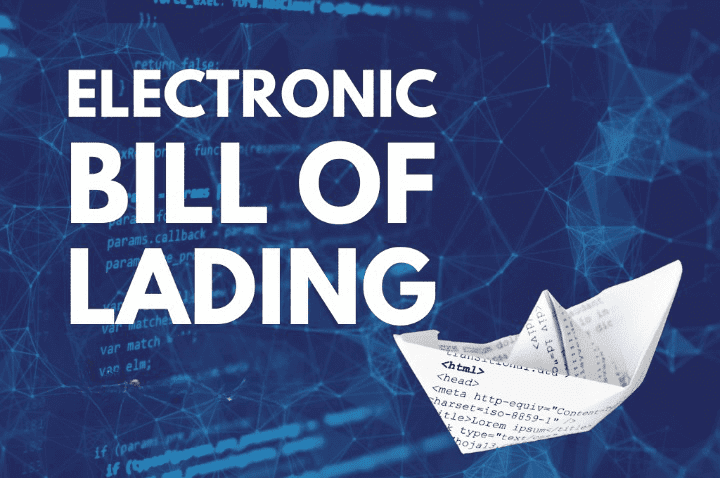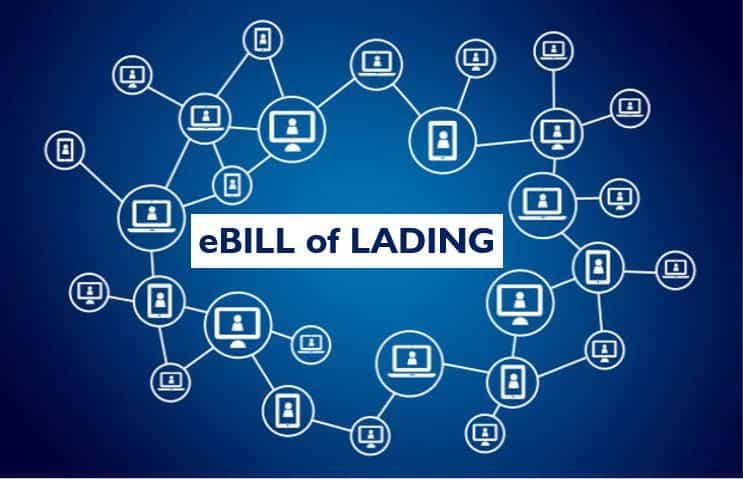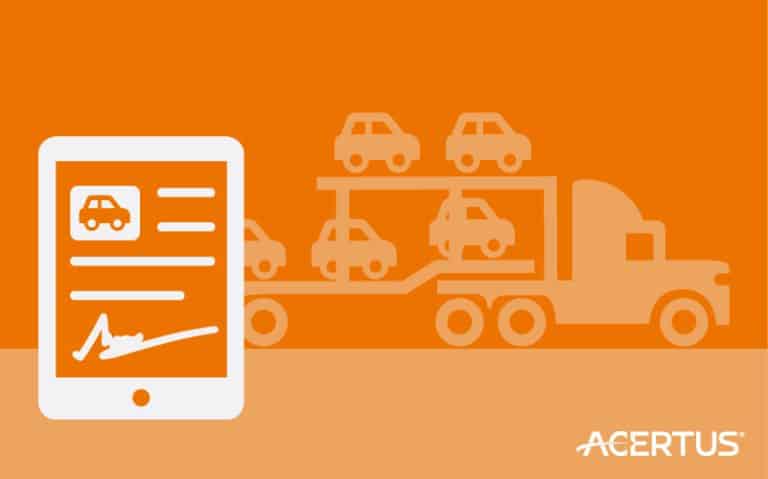If we think of logistics as gears that make the world run smoothly, then the paperwork is like the oil that keeps those gears moving. And among all the paperwork, the most important piece is the electronic bill of lading (eBoL).
Bill of lading is a legal document that specifies the timings, and the route and has the authorized signature of a person shipping your car. When the shipping company delivers the car to your specific location, a bill of lading also functions as a shipping receipt.
In recent years, the discussions to transform paper-based bill of lading (BoL) into electronic bill of lading (eBoL) have gained momentum.
In this blog post, we are going to discuss everything you should know about electronic bill of lading and how it functions in the automobile industry. Let’s begin with the basics and understand what eBoL is.
What is an eBoL (Electronic Bill Of Lading)?

eBoL represents the digital equivalent of the conventional paper bill of lading.
This electronic record keeps track of shipping information, including the sender, receiver, and the items being carried. An eBoL is more effective and economical than its paper counterpart since it can be generated and exchanged electronically. How is this done? Let’s understand this will the following steps:
- Examine the Vehicle: The driver attentively examines the vehicle’s exterior and takes some photos of the vehicle. Photos help to settle any potential disputes if damage does occur during the transport.
- Create a Report: The car shipping companies use paper or digital equipment to create a detailed record of the vehicle’s condition.
- Sign the Report: To ensure the report’s correctness, both the driver and the person picking up the vehicle sign it.
- Share the Report: If the report is digital, an email with a copy of the report is sent to the person who will pick it up.
- Begin the process: Finally, the driver begins the shipping process.
Now the question arises: What was the purpose of an electronic bill of lading when the paper bill of lading was playing its part? Let’s understand.
What is the Purpose of an Electronic Bill of Lading?
Let’s look at the three main purposes of using an electronic bill of lading listed below.
Acts as a Receipt
It confirms that the shipment is received in satisfactory condition and that the carrier has acknowledged receipt of the cargo in accordance with the contract.
Acts as a Title to the Goods.
The bill of lading includes the buyer’s details, to whom the goods are being shipped. The ownership isn’t transferred until the bill of lading has been passed to the receiving party. The shipper of the goods may transfer a copy of the bill of lading to the receiving party as proof of shipping, but the ownership lies with the person who has the original bill of lading. The bill of lading is given to the receiving party only after the full payment is made.
Acts as Proof of the Contract Terms of Carriage
The details regarding the type of shipment, how much of the goods it contains, and the destination are included in the bill of lading. It sometimes also includes the condition of the shipment. It is however not the original document, only the evidence of an actual contract.
Now that you know why we use eBoLs, let’s understand how they function.
How does eBoL Work?

An electronic bill of lading (eBoL) functions much like a paper bill of lading. After both parties agree on the contract terms, the bill of lading is created. Instead of a physical document, the eBoL is generated digitally.
The shipper gives this electronic document to the carrier responsible for moving the shipment. What sets the eBill of Lading apart is its digital nature, accessible to all parties involved in the shipment through a secure online platform.
eBoL serves as a tracking tool, allowing continuous monitoring of the shipment’s progress from its starting point to its final destination.
How Does eBoL’s Protect and Benefit You?
Let’s delve deeper and understand how eBoL can benefit you.
Reduces the Chances of Fraud
eBoLs undergo secure and reliable processing, eliminating the need for physical transfers and thereby preventing losses or fraudulent incidents during the shipment process.
For example, by using eBoL, a car shipping company electronically records a car’s condition and ownership details in digital format. The information is stored securely minimizing the risk of manipulating the bill, fraudulent alterations, or theft attempts. Thus, eBoL ensures that the car’s documentation remains safe and hence reduces the chances of fraud.
Fewer Chances of Mistakes
A bill of lading is considered the most important document in any transportation industry; thus, avoiding mistakes becomes crucial. eBoL has standard autocomplete functions and form fields, so codification mistakes can be easily prevented.
For example, if a company wants to ship a fleet of cars, then with eBoL’s a car transporter uses a digital platform where the information for shipping auto-fills and drop-down menu prevents mistakes. This automation reduces the risk of errors, thus ensuring accurate documentation.
Enhanced Transparency
Electronic bill of lading allows transparency since every crucial information like names, directions, purchase orders, special delivery instructions, dates, load descriptions, types of packaging, types of load, etc., is available to everyone.
For example, if a car shipping company wants to transport several cars together, using a traditional bill of lading may lead to misunderstandings regarding exact pickup locations, delivery times, and vehicle information. With eBoLs, the manufacturer inputs all vital information into a shared digital platform using which transporters can instantly access accurate data, ensuring precise handling and timely delivery.
Improves Speed, Cost, and Security
In terms of speed, cost, and security eBoLs outperform physical bills. Electronic bill of lading results in significant savings by removing insurance and any other administration costs.
Final Thoughts
The main reason behind the acceptance of eBoL was the pandemic when delays caused by presenting paper bills of lading surfaced. Remember, the future is paperless. Hence, businesses will be compelled to adopt electronic bills of lading, if not now, definitely in the near future.
The businesses have to put efforts into adopting the technology rather than giving an excuse of “it’s clear like mud.”
By implementing eBoL, the transportation and logistics industry can evolve and garner benefits in their delivery operations.
Frequently Asked Questions
Is eBoL acceptable?
Many businesses are slowly and gradually accepting eBoL. An electronic bill of lading is the digital equivalent of a paper bill. Slowly, the world is moving towards paperless transactions, thus leading to more acceptance of eBoL.
How does eBoL improve the shipping process?
Upgrading to an eBoL from a manual paper-based bill of lading can improve the shipping process to a greater extent. It reduces administration and operational costs for all the parties involved. Ultimately, this cost reduction will reduce the cost of shipping and the final products. It also emphasizes that the payment procedures are not delayed and that all records are up-to-date.
What is the difference between eBoL and paper billing of lading?
An electronic bill of lading is the digital version of a conventional paper bill of lading. All the details recorded in paper bills of lading can be recorded in electronic bills of lading, like the consignee, the shipper, and the commodity being shipped.





